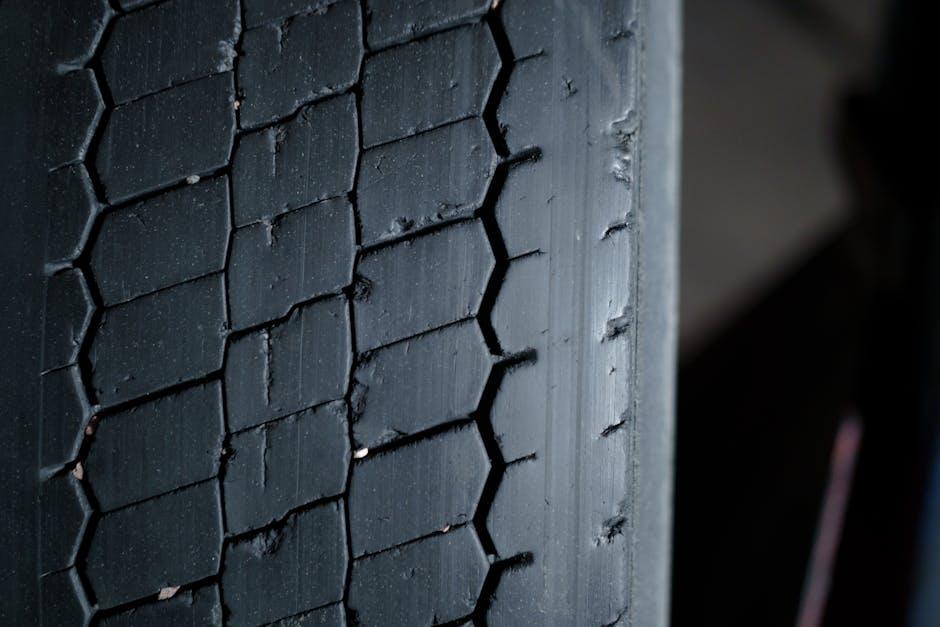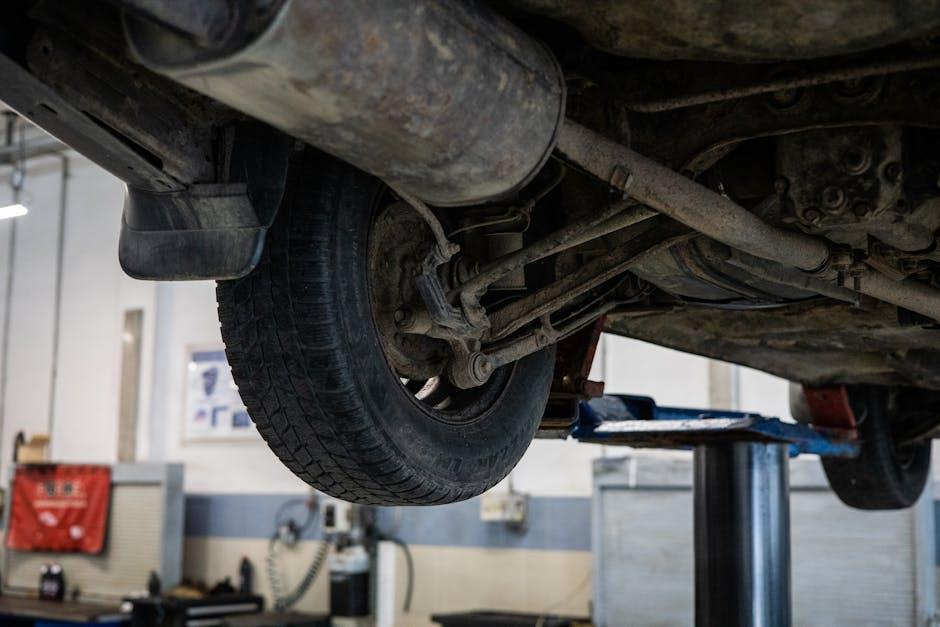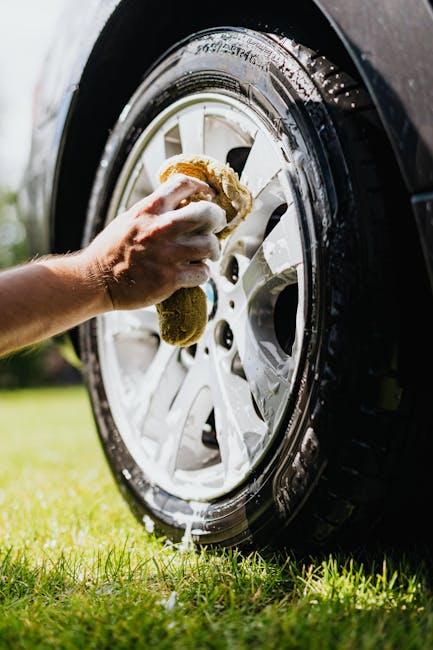Tire wear is a silent traveler on every journey, gradually shaping the way your vehicle meets the road. Though often overlooked, how tires wear can significantly impact safety, fuel efficiency, and overall driving comfort. Understanding the art—and science—of preventing tire wear is not just about prolonging rubber’s life but about steering your vehicle toward optimal performance. In this article, we’ll explore practical strategies and insightful tips to keep your tires rolling smoothly and evenly, turning the routine care of your vehicle’s most essential contact point into a simple, effective routine.
Table of Contents
- Understanding the Causes Behind Uneven Tire Wear
- The Role of Proper Tire Inflation in Extending Tire Life
- How Regular Wheel Alignment Protects Your Tires
- Choosing the Right Tires for Your Driving Conditions
- The Importance of Routine Tire Rotation and Inspection
- Driving Habits That Minimize Tire Wear and Enhance Safety
- Q&A
- Closing Remarks

Understanding the Causes Behind Uneven Tire Wear
Uneven tire wear often signals underlying issues that can compromise your vehicle’s safety and performance. One of the primary culprits is improper wheel alignment, which causes tires to wear more on one side than the other. Additionally, inadequate tire pressure, either too high or too low, can lead to irregular tread degradation. Drivers should also be aware that factors such as worn-out suspension components and aggressive driving habits play significant roles in accelerating uneven wear patterns.
Identifying these factors early can save both your tires and your budget. Here are some common causes to monitor:
- Misaligned wheels: Causes feathering or one-sided wear.
- Imbalanced tires: Leads to patchy or cupped tread wear.
- Incorrect tire pressure: Results in center or edge wear depending on pressure levels.
- Damaged suspension parts: Can create irregular wear spots.
- Harsh driving: Sudden stops and sharp turns accelerate tread degradation.
| Cause | Wear Pattern | Effect |
|---|---|---|
| Underinflation | Edge wear | Reduced fuel efficiency |
| Overinflation | Center wear | Decreased traction |
| Wheel misalignment | One-sided wear | Poor handling |
| Faulty suspension | Spotty wear | Vibrations and noise |

The Role of Proper Tire Inflation in Extending Tire Life
Maintaining the correct tire pressure is fundamental in ensuring your tires wear evenly and last longer. Tire under-inflation causes excessive flexing of the tire walls, leading to increased heat buildup which accelerates tread wear and the risk of tire failure. Conversely, over-inflation reduces the tire’s contact patch with the road, resulting in uneven wear primarily down the center of the tread and a harsher ride. Regularly checking your tire pressure—ideally once a month and before long trips—helps maintain optimal grip, fuel efficiency, and extends overall tire life.
Implementing a routine tire pressure check can be simple and effective. Here is a quick guide to keep your tires in top shape:
- Always use a reliable gauge: Digital or dial gauges provide the best accuracy over visual inspections.
- Check when tires are cold: Pressure rises as tires heat up during driving, leading to inaccurate readings.
- Refer to manufacturer specs: Find the recommended pressure listed on the driver’s door sill or owner’s manual.
- Adjust for load and driving conditions: Carrying heavy loads or driving at high speeds may require pressure modifications.
| Tire Pressure Condition | Effect on Tire Wear | Recommended Correction |
|---|---|---|
| Under-Inflated | Wear on edges, heat buildup | Increase pressure to manufacturer spec |
| Over-Inflated | Center worn out faster, stiff ride | Reduce pressure to recommended level |
| Properly Inflated | Even wear across tread | Maintain regular checks |

How Regular Wheel Alignment Protects Your Tires
Misaligned wheels cause uneven tire wear, which can lead to premature tire replacement and a compromised driving experience. When your wheels are not properly aligned, certain areas of your tires endure excessive pressure and friction, resulting in patterns like cupping, feathering, or uneven tread depth. Regular check-ups ensure that your tires roll smoothly and evenly, extending their lifespan and maintaining optimal grip on the road.
Besides preserving tire health, proper wheel alignment contributes to improved fuel efficiency and vehicle stability. With misalignment, your engine works harder to pull the car straight, burning more fuel and putting unnecessary strain on suspension components. Here’s what regular alignment safeguards against:
- Uneven tire tread wear
- Poor fuel efficiency
- Unstable steering response
- Potential damage to suspension parts
| Alignment Issue | Effect on Tires | Recommended Frequency |
|---|---|---|
| Toe misalignment | Edge wear | Every 6 months |
| Camber misalignment | Inside/outside shoulder wear | Every 12 months |
| Caster misalignment | Steering difficulty | Annually or after suspension work |

Choosing the Right Tires for Your Driving Conditions
Selecting tires that align with your typical driving environment is crucial for maximizing their lifespan and maintaining optimal performance. For instance, if you frequently navigate wet or icy roads, opting for all-season or winter tires with specialized tread patterns can enhance traction and reduce irregular wear. Conversely, if your driving is primarily on dry highways, summer tires with a softer rubber compound provide better handling and reduce rolling resistance, which helps prevent premature wear. Always consider your local climate and road conditions to avoid mismatches that lead to uneven tire degradation.
Below is a quick guide to help you match your driving style with the right tire type:
- City Driving: Focus on durability and comfort with all-season tires that handle varied conditions.
- Highway Cruising: Opt for low rolling resistance tires designed for long distances and fuel efficiency.
- Off-Road Adventures: Choose tires with reinforced sidewalls and aggressive tread for rugged terrain.
- Winter Conditions: Equip with snow or ice-specific tires with soft compounds and sipes for grip.
| Driving Condition | Recommended Tire Type | Key Benefit |
|---|---|---|
| Wet/Slippery Roads | All-Season / Winter | Enhanced traction and safety |
| Long Highway Trips | Touring / Low Rolling Resistance | Improved fuel economy |
| Off-Road Trails | All-Terrain / Mud-Terrain | Durability and grip on rough surfaces |
| Dry, Warm Weather | Summer Performance | Superior handling and longevity |

The Importance of Routine Tire Rotation and Inspection
Regularly moving your tires from one position to another ensures that wear is evenly distributed across all four wheels. This simple service can extend the lifespan of your tires, improve handling, and maintain optimal fuel efficiency. Ignoring tire rotation leads to uneven tread wear, which not only compromises safety but also forces premature tire replacement, increasing long-term costs.
Alongside rotation, a thorough inspection helps detect early signs of damage such as cracks, bulges, or embedded objects. Incorporate these checks into your routine maintenance schedule to catch problems before they escalate. Remember, maintaining proper tire pressure and alignment should also accompany each rotation to maximize benefits. Here’s a quick checklist to keep your tires in top shape:
- Check tread depth and look for uneven wear patterns
- Inspect sidewalls for cuts, bulges, or cracks
- Verify tire pressure using a reliable gauge
- Assess the condition of the valve stems
- Ensure wheel alignment is within manufacturer specifications
| Rotation Pattern | Recommended Mileage | Benefits |
|---|---|---|
| Front-to-Back | 5,000 – 7,500 miles | Balances wear on front drive vehicles |
| X-Pattern | 5,000 – 7,500 miles | Helps tires wear evenly on all-wheel drive |
| Rearward Cross | 6,000 – 8,000 miles | Ideal for rear-wheel drive cars |

Driving Habits That Minimize Tire Wear and Enhance Safety
Maintaining smooth and consistent driving habits is key to extending your tire life while boosting overall safety on the road. Avoid aggressive acceleration and sudden braking, as these maneuvers create excessive friction and heat that wear down tire tread prematurely. Instead, aim for gradual speed changes and use engine braking when possible to reduce tire stress. Consistent speeds and gentle steering not only preserve the tire’s grip but also improve stability and control, especially in wet or slippery conditions.
Equally important is being mindful of road surfaces and adjusting your driving accordingly. Navigating potholes, curbs, and uneven terrain at moderate speeds can prevent structural damage to your tires. Adopting these habits minimizes the risk of blowouts and uneven tread wear. Consider this quick guide to ideal driving practices:
- Maintain steady speeds: Avoid rapid acceleration or abrupt stops.
- Anticipate traffic flow: Smooth out your driving to reduce harsh braking.
- Steer gently: Sharp, sudden turns increase tire wear.
- Adjust to conditions: Slow down on rough or wet roads to protect tires.
| Driving Habit | Benefit |
|---|---|
| Gradual Acceleration | Reduces tire friction and heat buildup |
| Gentle Braking | Prevents premature tread wear |
| Moderate Speed on Rough Roads | Protects tire structure and sidewalls |
| Steady Steering | Enhances tire contact and grip |
Q&A
Q: Why does tire wear happen in the first place?
A: Tire wear occurs due to continuous friction between the tires and the road surface. Factors like driving habits, road conditions, tire pressure, and vehicle alignment all contribute to how quickly your tires wear down.
Q: How often should I check my tire pressure to prevent wear?
A: Ideally, check your tire pressure at least once a month and before any long trips. Proper inflation ensures even contact with the road, reducing uneven wear and improving fuel efficiency.
Q: Can regular wheel alignment actually extend tire life?
A: Absolutely. Misaligned wheels cause tires to wear unevenly, often on one edge. Getting your alignment checked and adjusted every 6,000 to 10,000 miles helps keep tires wearing evenly and lasting longer.
Q: What role does tire rotation play in preventing tire wear?
A: Rotating your tires every 5,000 to 8,000 miles equalizes wear patterns since front and rear tires wear differently. This simple step can significantly extend the lifespan of your tires.
Q: Does driving style impact tire wear?
A: Yes, aggressive driving like speeding, hard braking, and sharp turns accelerates tire wear. Smooth, cautious driving minimizes unnecessary stress on your tires.
Q: Are there specific tire types better at resisting wear?
A: Some tires are designed with harder rubber compounds to resist wear longer, while others focus on performance or comfort. Choosing tires suited to your driving habits and road conditions can help prevent premature wear.
Q: How can I tell if my tires are wearing unevenly?
A: Uneven wear might show as bald spots, scalloping, or more wear on one side of the tire. Regular visual inspections and professional checks can help spot these issues early.
Q: Is it true that overloading the vehicle contributes to tire wear?
A: Yes. Overloading increases pressure on tires beyond their design limits, causing excessive heat and accelerated tread deterioration.
Q: Can seasonal changes affect tire wear?
A: They can. Tires can lose pressure in cold weather and gain it in hot weather. Additionally, winter tires and summer tires wear differently depending on temperature and road conditions. Adjusting tire care seasonally helps prevent uneven wear.
Q: What’s the single best practice to prevent tire wear?
A: Consistency in tire maintenance—regularly checking pressure, rotating tires, ensuring alignment, and driving responsibly—is your best defense against premature and uneven tire wear.
Closing Remarks
In the journey of keeping your tires rolling smoothly, prevention is your most reliable companion. By embracing simple habits—regular rotations, proper inflation, and mindful driving—you not only extend the life of your tires but also enhance safety and performance. Tire wear may be inevitable over time, but with a little care and attention, it doesn’t have to come prematurely. Remember, each mile is a story, and well-maintained tires ensure yours is one of a long and steady adventure.

